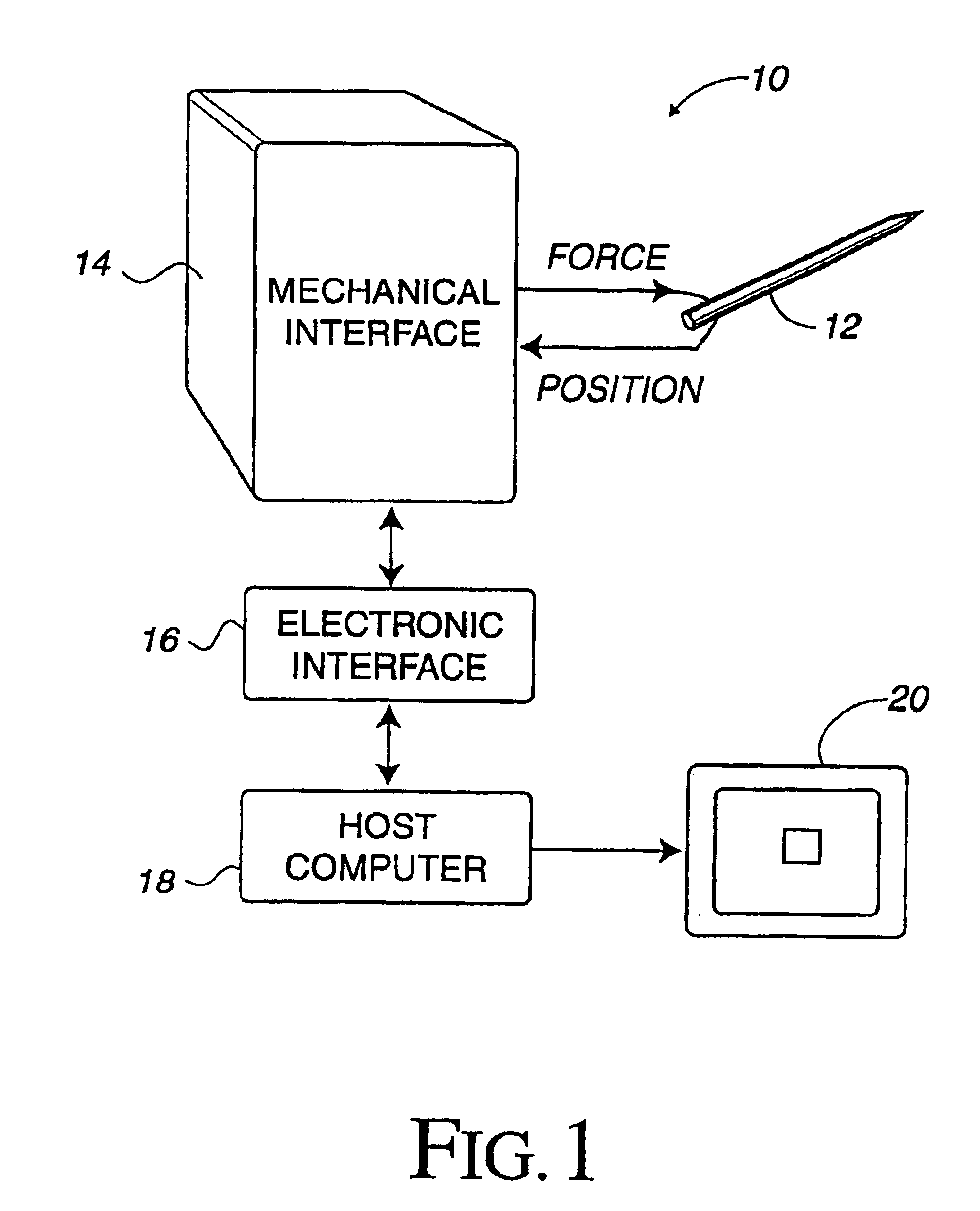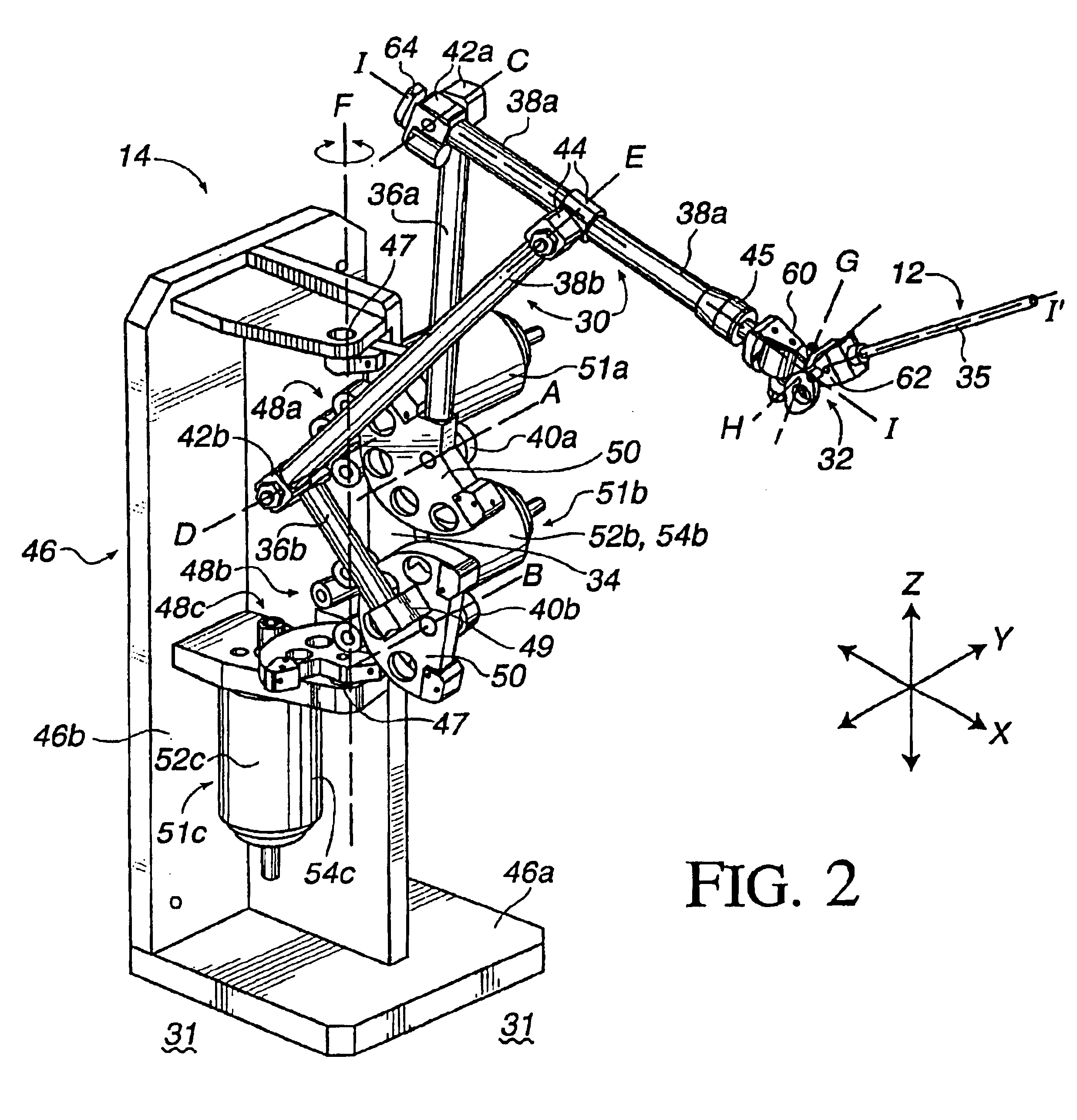Method and apparatus for providing force feedback using multiple grounded actuators
a technology of grounded actuators and force feedback, applied in the field of interface devices, can solve the problems of not providing force feedback to users, corrupting the system bandwidth, and not allowing users to experience an entire sensory dimension in virtual reality simulations, and achieve high-realism force feedback and low inertial contribution to the system
- Summary
- Abstract
- Description
- Claims
- Application Information
AI Technical Summary
Benefits of technology
Problems solved by technology
Method used
Image
Examples
Embodiment Construction
[0029]FIG. 1 illustrates a force feedback virtual reality system 10 used to provide a user-manipulable object in a virtual environment, simulation, or video game. Virtual reality system 10 includes a user manipulable object 12, a mechanical interface 14, an electronic interface 16, and a host computer 18. The illustrated virtual reality system 10 includes a stylus 12 as a user manipulable object.
[0030]User manipulable 12 used in conjunction with the present invention is manipulated by a user and, for example, virtual reality images are displayed on a display screen 20 of the computer system 18 in response to such manipulations. For example, a user can move a stylus 12 to correspondingly move a computer generated object, such as a cursor or other image, in a virtual environment. The available degrees of freedom in which user manipulable object 12 can be moved are determined from the mechanical interface 14, described below.
[0031]It will be appreciated that a great number of other typ...
PUM
 Login to View More
Login to View More Abstract
Description
Claims
Application Information
 Login to View More
Login to View More - R&D
- Intellectual Property
- Life Sciences
- Materials
- Tech Scout
- Unparalleled Data Quality
- Higher Quality Content
- 60% Fewer Hallucinations
Browse by: Latest US Patents, China's latest patents, Technical Efficacy Thesaurus, Application Domain, Technology Topic, Popular Technical Reports.
© 2025 PatSnap. All rights reserved.Legal|Privacy policy|Modern Slavery Act Transparency Statement|Sitemap|About US| Contact US: help@patsnap.com



